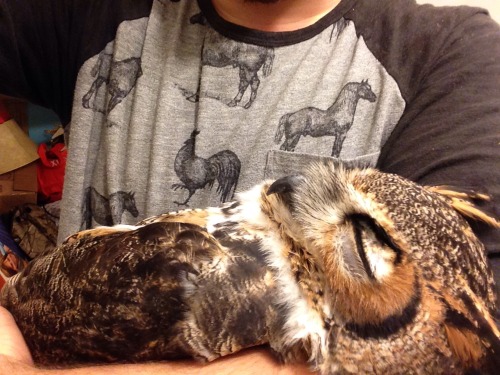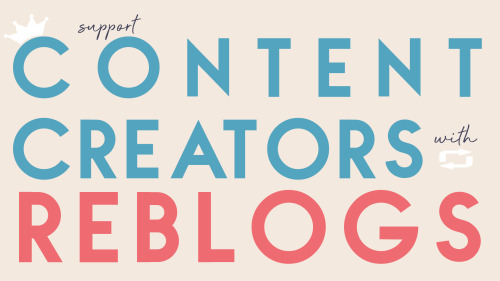Arieso226
More Posts from Arieso226 and Others
The Tuskegee Experiment
NO. 1
The Tuskegee Experiment was a hoax experiment used to study how black Americans differ from white Americans in catching a disease. It was a study truly held on the biases and stereotypes of other races. No scientific experiment inflicted more damage on the collective psyche of black Americans than the Tuskegee experiment. ‘‘In 1932, following a survey of the incidence of syphilis in a number of Southern regions, the venereal disease division of the U.S Public Health Service (USPHS) began what turned out to be a forty-year project in Macon County, Alabama, to follow the effects of untreated syphilis in some 400 black men. The study continued through World War II, when a number of the men who were called up for the draft and, had they not been research subjects, would have received medical attention for their infection. It continued through the 1950s, after the efficacy of penicillin treatment was established, and after the Nuremberg trials produced a code of ethics for biomedical research. It lasted through the 1960s, untouched by the civil rights agitation, and unaffected by the code of research adopted by the USPHS itself. It ended only in 1972 when an account of the experiment in the Washington Post sparked a furor.’’
NO. 2
One question that boggles the mind is how could an experiment of such degree that violated both moral and medical ethics continue on for so long? Unfortunately, no questions were asked about the rights and welfare of the men who became study/research subjects, and those same men didn’t even understand that they were unwillingly participating in a research project. Each man was given many treatments, placebo’s mostly, including a ‘spinal tap’, where the needle went directly into the spine without anesthesia, just to see what would happen. ‘‘At least three generations of doctors serving in the venereal disease division of the USPHS, numerous officials at the Tuskegee Institute and its affiliated hospital, hundreds of doctors in the Macon County and Alabama medical societies, and numerous foundation officials at the Rosenwald Fund and Milbank Memorial Fund. It also includes the many readers of such medical journals like the Public Health Reports, the Archives of Internal Medicine, and the Journal of Chronic Diseases. These readers could not have escaped the conclusion that untreated blacks had been severely damaged. In July 1954, an article in the Public Health Reports, to choose one example from many, concluded that ‘the life expectancy of a Negro Male between the ages of 25 to 50 years, infected with syphilis and receiving no appreciable treatment for his infection, is reduced by about 17%.’’
NO. 3
As the 400 men were being ‘treated’, government officials were ecstatic to see that syphilis was the same in blacks as it was in whites, by looking at the many and various autopsies of the men who did not survive, due to organ failure and damage. Racism was at the forefront of this tragedy, as scientists saw black men as expendable and looked forward to seeing the disease progress. Men who were affected tried to seek out treatment elsewhere, in other counties but were called back by the very doctors and nurses they trusted, since they were apart of the study. Once the news story broke out, many in the black community lost faith in the government and no longer believed health officials who spoke on matters of public concern. For example, when the AIDS crisis began in the ’80s and ’90s, ‘‘the Tuskegee experiment predisposed many blacks to distrust health authorities, a fact many whites had difficulty understanding. The NYTimes on May 6, 1992, many black Americans believes that AIDS and the health measures used against it are part of the conspiracy to wipe out the black race. To support their assertion, their editor cited a survey of black church members in 1990 that revealed ‘an astonishing 35% believed AIDS was a form of genocide.’


Happy Chinese New Year! The year of the tiger~


mhhmmm yea
Jason: *throws open door*
Jason: you two ARE having sex
Will and Nico: *innocently laying around and reading*
Nico: we are? Will why didn't you tell me, I would have put my book down
Oh, I mixed it up! Thank you for educating me.
isn't it insane though how schizophrenic people are viewed as violent and dangerous by the majority of society when in reality schizophrenic people are nearly 14 times more likely to be on the receiving end of violence than to be the perpetrators...
Oh my gosh
just do it
Gender and Religion
NO.1
In order to understand the system of race, class and gender in America, we have to look at England’s role in their systems of class. ‘During this time period, the emergence of a consumer-oriented corporate order undermined the coherence of the Victorian gender system; rising gender consciousness among black women turned the ideology of ‘women’s sphere’ into a disrupted terrain of racial and struggle class; while women’s devotional practices became a site of gender contestation within American Catholic culture. Each of these developments has given impetus to new studies. Historians of conservative evangelicalism have complicated the heretofore easy equation of ‘Protestantism’ with ‘women’s sphere’ by delineating the different understandings of women’s role within early twentieth-century Protestantism; Progress across racial lines has been initiated by several important literary and historical studies that reveal how the separate spheres ideology served the interests of the white middle class by camouflaging racial and economic differences.’’
NO. 2
Since the early 1980’s, advances in the study of gender in American history have come primarily through an unmasking of the assumptions of earlier studies; Others have laid bare the earlier scholarship’s assumption’s to universal gender definitions that do not take into account differences in women’s roles based on race, class, or region. Additionally, several historians have begun to explore the influence of gender relations on the lives of men. As a result, we are beginning to get a picture of gender in the American history that goes beyond the ‘women’s sphere’ experience of white, middle-class, northeastern women.
For the past twenty years of this apparent lifetime, Protestant mainline has given way to a religious studies interest in the social and cultural history of outsiders. Concurrently, an older Protestant consensus narrative has come to be seen as one of several stories that, together seek to account for the American religious past. Further inquiries have questioned the usefulness of both liberal and evangelical labels in accounting for the deep racial, economic and theological divisions of late nineteenth century among the more than 150 Protestant denominations, not to speak of the rapidly growing population of Catholics with their own substantial differences of nationality, theology and social class. As historians have started to study seriously the deep diversities in American culture, gender has emerged as an important analytic category for re-imagining America’s religious past.
NO. 3
As recently as 1985, Elizabeth Fox-Genovese complained that historians of religion and gender have too often simply added ‘religion to an almost finished picture rather than exploring ways in which religion might refine and even radically revise the picture.’ Within the past decade, however recent developments both within and without the field of American religious history have begun to coalesce and suggest the contours of promising new departures, and most of this new work focuses on the late nineteenth and twentieth centuries.

THINK BEFORE YOU BUY POISON!!
I know none of you want to see this but something has to be done! Awareness and education are key!!!
A friend of mine found this great horned owl that had eaten a poisoned rodent and died a slow terrible death.
When you’re setting out poison to kill rats, mice, ect. you’re very well setting poison out to also kill hawks, owls, etc.– basically animals that are “on your side”, helping you to eliminate those rodents.
Poisoned rodents don’t just immediately flop over and die. They’ll slowly stagger around as the poison begins to take effect, making them an easy meal for another animal to grab.
Some people might remember that I’ve posted about this before (the Great Horned owl baby found laying on the ground in April– also found too late to be saved.) This is unfortunately a common tragedy. Many people admire birds of prey, saying how beautiful they are, how they “absolutely love owls”, yet a disturbing amount are unaware that their uneducated/inconsiderate actions are leading to those birds dying an agonizing death as they slowly bleed internally.Someone I know who does wildlife rehabilitation/rescue recently got in a Red-tailed hawk that had consumed poison. They were ultimately unable to treat him, and she wasn’t even in the same room when she heard him gasping and wheezing, dying. For at least 10 years she has treated hundreds, probably thousands of animals and said it was one of the most disturbing things she’s witnessed dealing with wildlife.
Please consider what your actions may lead to. There are safer alternatives. Again, when you put out poison, you’re setting up a death for those that are naturally taking care of those rodents you want gone.

tumblr is not instagram. likes on tumblr, while appreciated, are effectively useless in helping a creator reach a wider audience.
when you like something, it goes into your own personal folder. and chances are good that, even if it’s public, no one will see it.
likes do not get shared to the dashboard, where others can actually see and have the opportunity to engage.
liking a creation only really benefits you, and not the creator or the rest of the tumblr community!
likes are great for bookmarking, saving posts with the intent of a later reblog, engaging with certain posts that don’t need to be shared (ie. personal posts), posts that you are not comfortable sharing, and prepping a queue.
REBLOGGING is the best way to support a content creator!
reblogs boost attention and engagement. it actually allows for that content to be shared with others. which, really, is what tumblr is all about!
tldr; reblogs > likes. please don’t take content creators for granted. this site would be nothing without them!
-
 aceyanaheim liked this · 10 months ago
aceyanaheim liked this · 10 months ago -
 dejavrai liked this · 1 year ago
dejavrai liked this · 1 year ago -
 snacklepack liked this · 1 year ago
snacklepack liked this · 1 year ago -
 cornyblastt liked this · 2 years ago
cornyblastt liked this · 2 years ago -
 mcgirrgirr liked this · 2 years ago
mcgirrgirr liked this · 2 years ago -
 porsche1955 liked this · 2 years ago
porsche1955 liked this · 2 years ago -
 lovebobbiione liked this · 2 years ago
lovebobbiione liked this · 2 years ago -
 kalemin-dili liked this · 2 years ago
kalemin-dili liked this · 2 years ago -
 asterthief liked this · 2 years ago
asterthief liked this · 2 years ago -
 whatupsociety liked this · 2 years ago
whatupsociety liked this · 2 years ago -
 chanelslola reblogged this · 2 years ago
chanelslola reblogged this · 2 years ago -
 chanelslola liked this · 2 years ago
chanelslola liked this · 2 years ago -
 arieso226 reblogged this · 2 years ago
arieso226 reblogged this · 2 years ago -
 ratmily liked this · 2 years ago
ratmily liked this · 2 years ago -
 ozziel liked this · 2 years ago
ozziel liked this · 2 years ago -
 mechanica1-hands liked this · 2 years ago
mechanica1-hands liked this · 2 years ago -
 alastaircarstairsismybff liked this · 2 years ago
alastaircarstairsismybff liked this · 2 years ago -
 y33h0w liked this · 2 years ago
y33h0w liked this · 2 years ago -
 kaleiraher liked this · 2 years ago
kaleiraher liked this · 2 years ago -
 scatteredartist72 liked this · 2 years ago
scatteredartist72 liked this · 2 years ago -
 sufferingplant reblogged this · 2 years ago
sufferingplant reblogged this · 2 years ago -
 sufferingsucculents reblogged this · 2 years ago
sufferingsucculents reblogged this · 2 years ago -
 sufferingplant liked this · 2 years ago
sufferingplant liked this · 2 years ago -
 spacecowboy288 liked this · 2 years ago
spacecowboy288 liked this · 2 years ago -
 myleftpinkytoe reblogged this · 2 years ago
myleftpinkytoe reblogged this · 2 years ago -
 cris-umweltphilosopher liked this · 2 years ago
cris-umweltphilosopher liked this · 2 years ago -
 rarebluerat liked this · 2 years ago
rarebluerat liked this · 2 years ago -
 moonlitarktoi liked this · 2 years ago
moonlitarktoi liked this · 2 years ago -
 platosraves liked this · 2 years ago
platosraves liked this · 2 years ago -
 sxcess liked this · 2 years ago
sxcess liked this · 2 years ago -
 idol-fantasy-archive liked this · 2 years ago
idol-fantasy-archive liked this · 2 years ago -
 atrainpassenger liked this · 2 years ago
atrainpassenger liked this · 2 years ago -
 dontblockthespaceheater liked this · 2 years ago
dontblockthespaceheater liked this · 2 years ago -
 dontblockthespaceheater reblogged this · 2 years ago
dontblockthespaceheater reblogged this · 2 years ago -
 killerbeeswithattitude liked this · 2 years ago
killerbeeswithattitude liked this · 2 years ago -
 fartfartfartfartfartfart liked this · 2 years ago
fartfartfartfartfartfart liked this · 2 years ago -
 sweetenby liked this · 2 years ago
sweetenby liked this · 2 years ago -
 ookaookaooka liked this · 2 years ago
ookaookaooka liked this · 2 years ago -
 poliwhirle liked this · 2 years ago
poliwhirle liked this · 2 years ago -
 thaliagivemestrength liked this · 2 years ago
thaliagivemestrength liked this · 2 years ago -
 clara-like-with-an-a liked this · 2 years ago
clara-like-with-an-a liked this · 2 years ago -
 hearthecrazy liked this · 2 years ago
hearthecrazy liked this · 2 years ago -
 thehonorableworm liked this · 2 years ago
thehonorableworm liked this · 2 years ago -
 shadowyfuture liked this · 2 years ago
shadowyfuture liked this · 2 years ago -
 neutero-uno reblogged this · 2 years ago
neutero-uno reblogged this · 2 years ago -
 scenesfromhighways1981-2009 liked this · 2 years ago
scenesfromhighways1981-2009 liked this · 2 years ago
26-year-old Anthro-Influencer Anthropology, blogger, traveler, mythological buff! Check out my ebook on Mythology today👉🏾 https://www.ariellecanate.com/
208 posts
